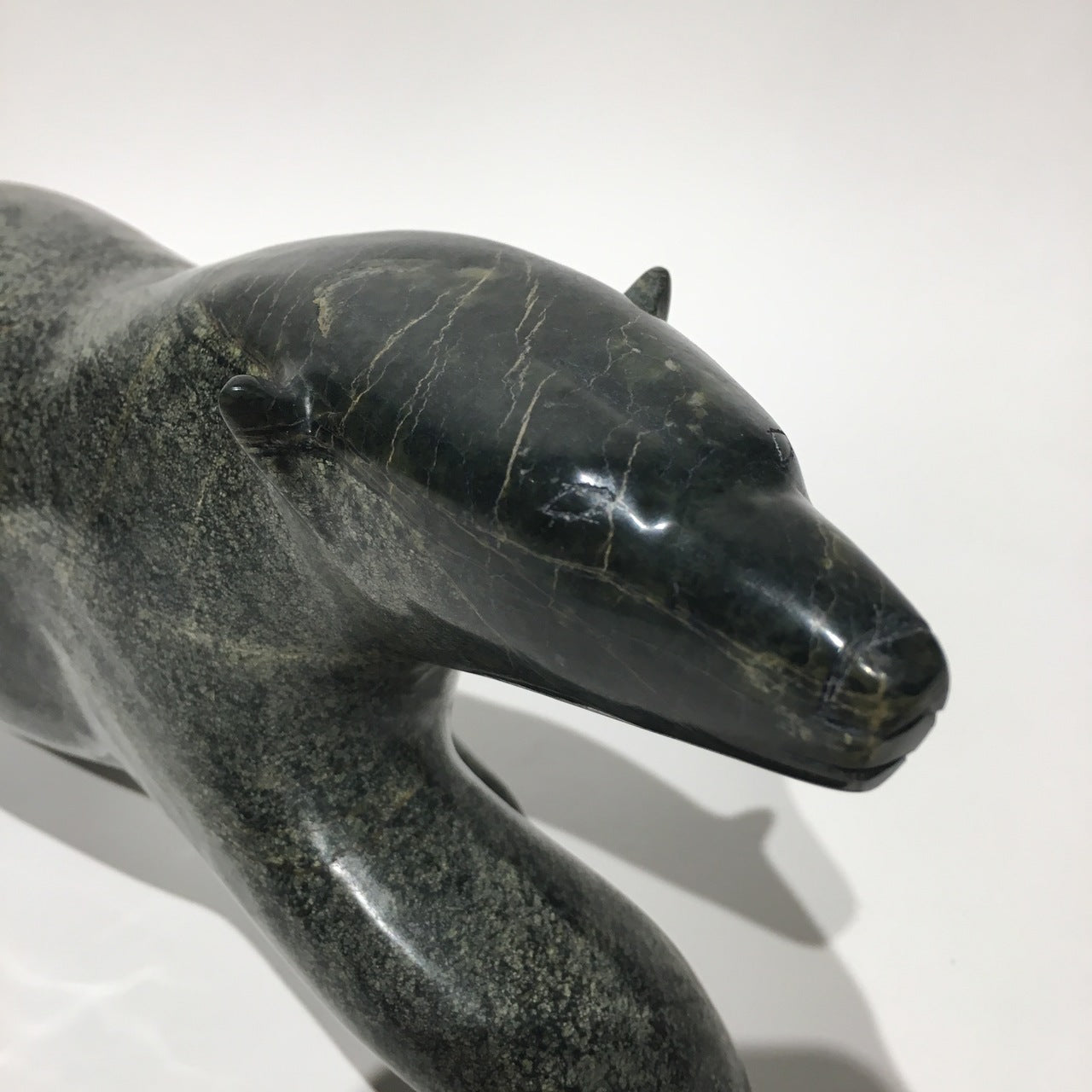Native Art Gallery
Walking Bear
Walking Bear
Artist: Noah Kelly
Community: Cape Dorset
Medium: Soapstone
Dimensions (in): W4.0 x H 12.0 x D5.0
Reference: 106815
Couldn't load pickup availability
Share
Polar Bear, Nanuq, called the "King of the North", is the greatest predator of the Arctic and a powerfully respected animal. He is the one animal that is at home both on land and water. He is built for his environment and has no troubles surviving the long, harsh winters. The polar bears of Nunavut tend to be solitary creatures, generally travelling alone in the winter. When you see two bears together, they are most likely siblings who have learned to hunt together with utmost success.
Some Inuit believe that how we live our lives affects what we become in the afterlife. Apparently, the best reward for a life-well-lived is to return in the form of the polar bear. This is because the ‘King of the Arctic’, as he is endearingly called, is strong enough to survive the long, cold winters.
This piece is carved in honour of the animal itself; it celebrates the polar bear, his spirit, his strength, and his legend. May he always be a source of inspiration.
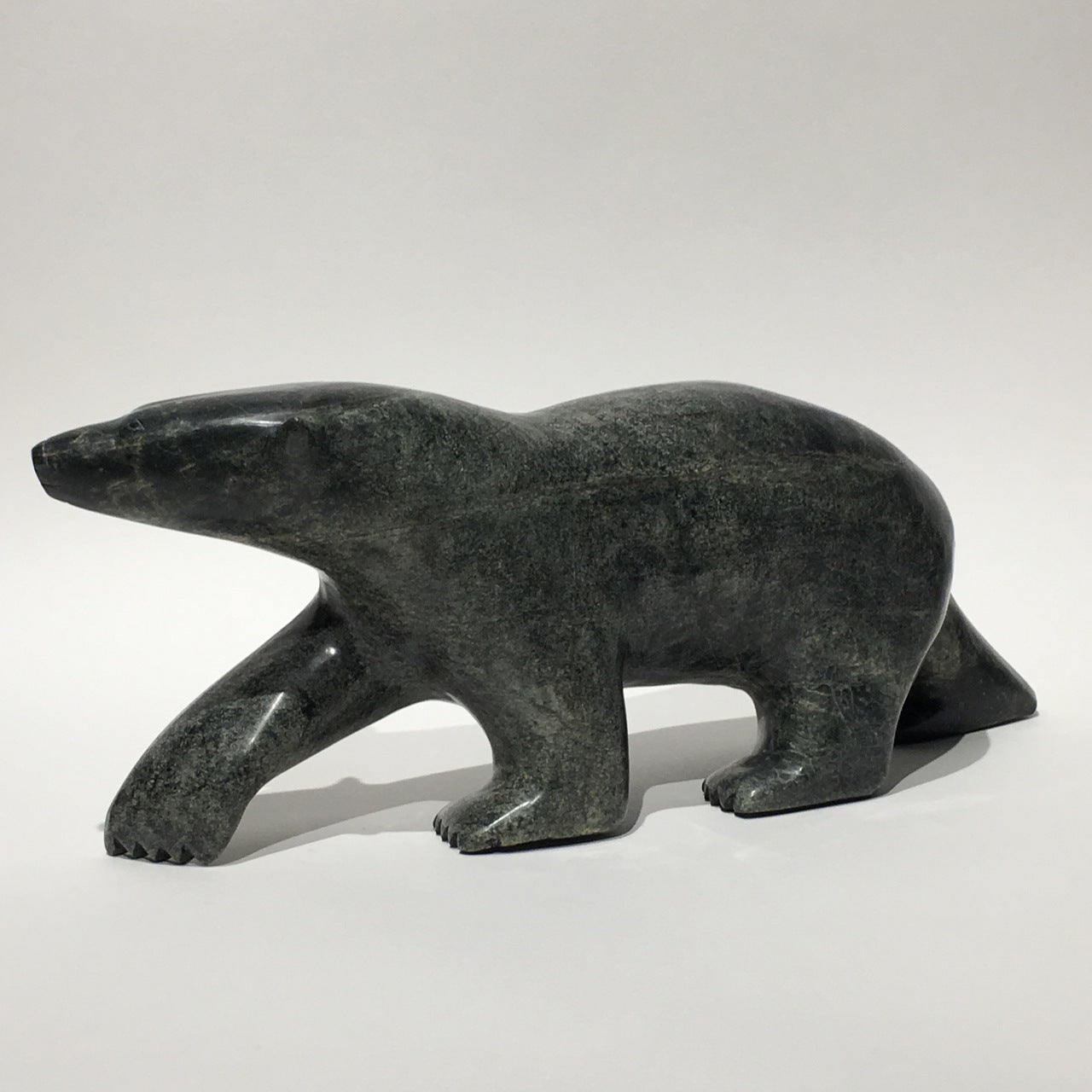

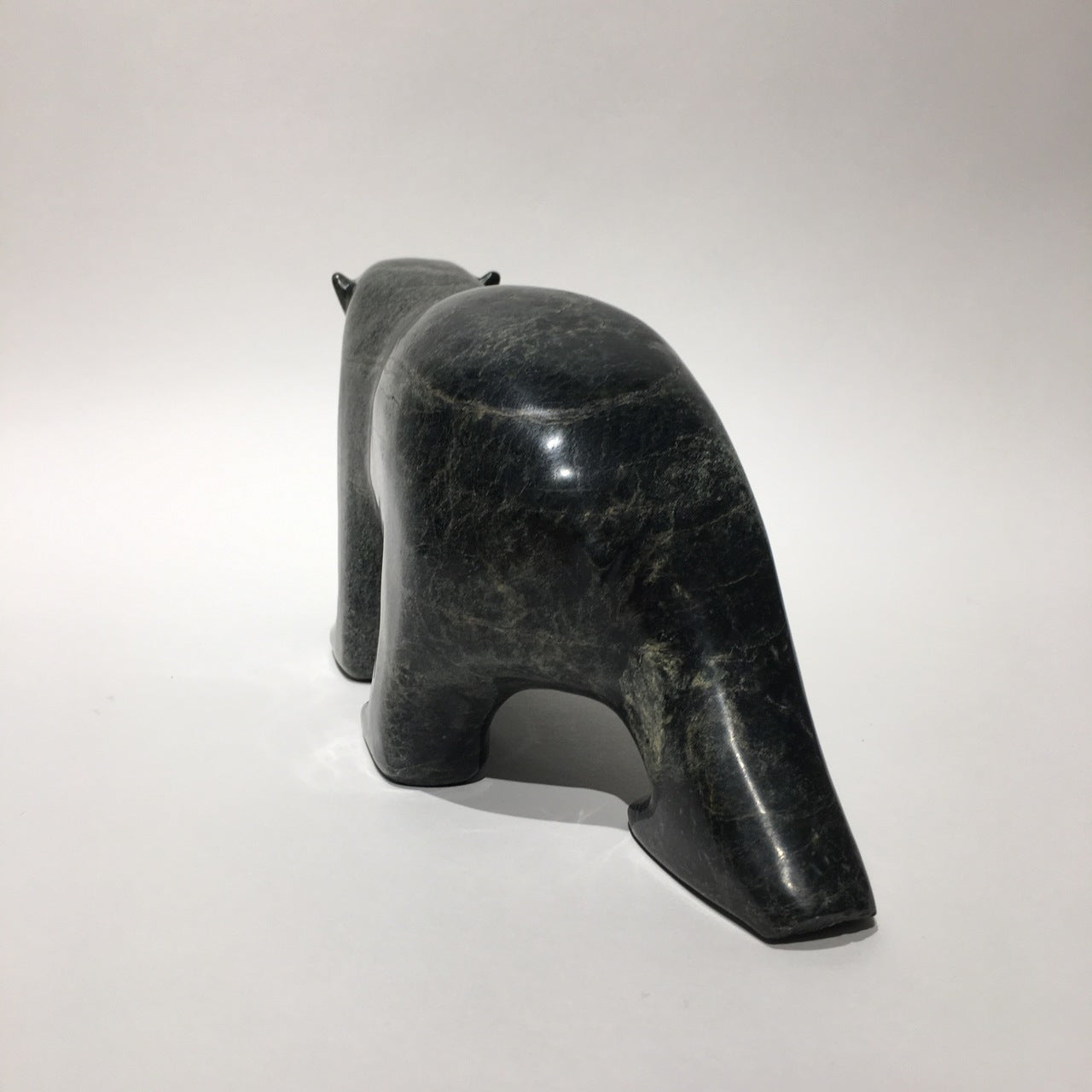
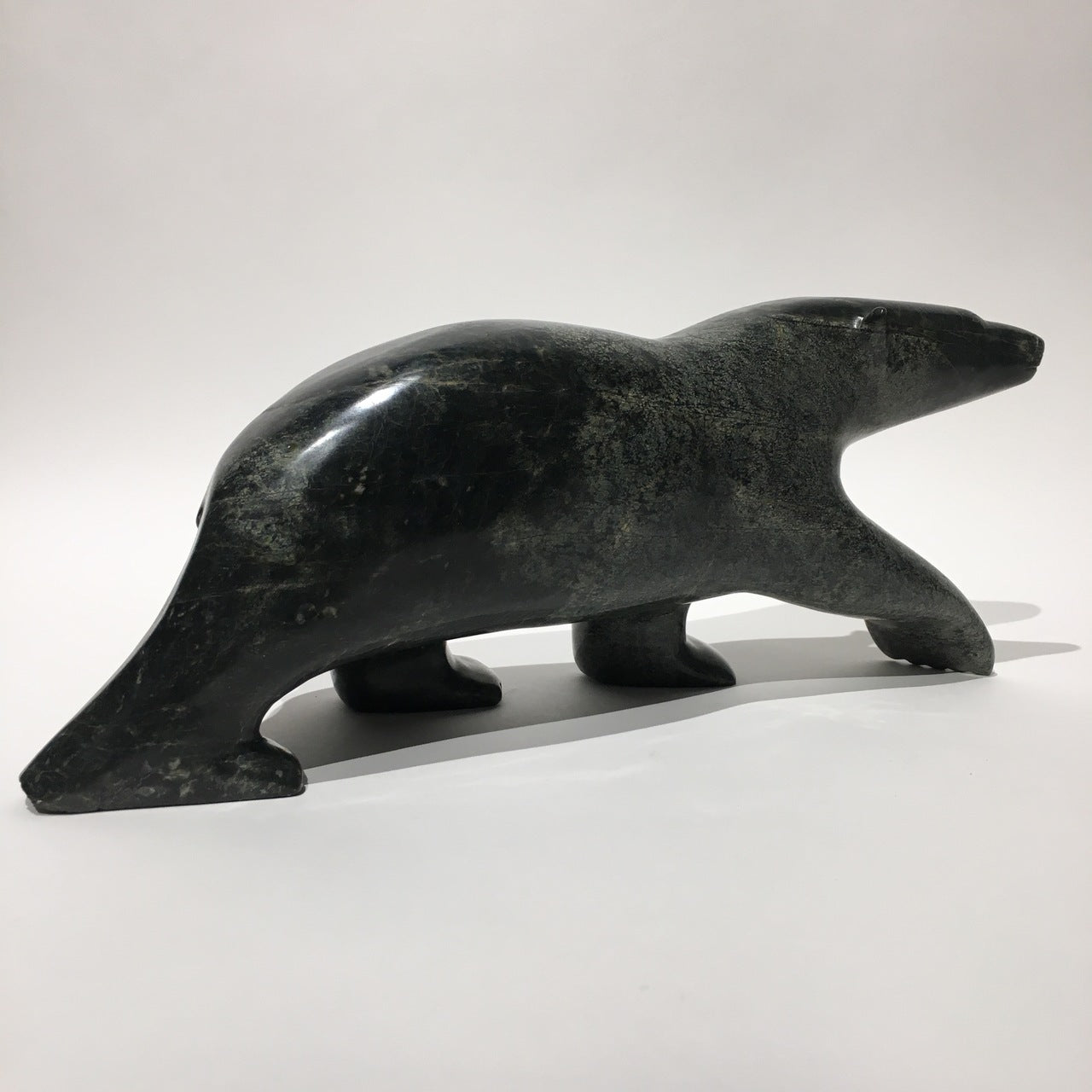
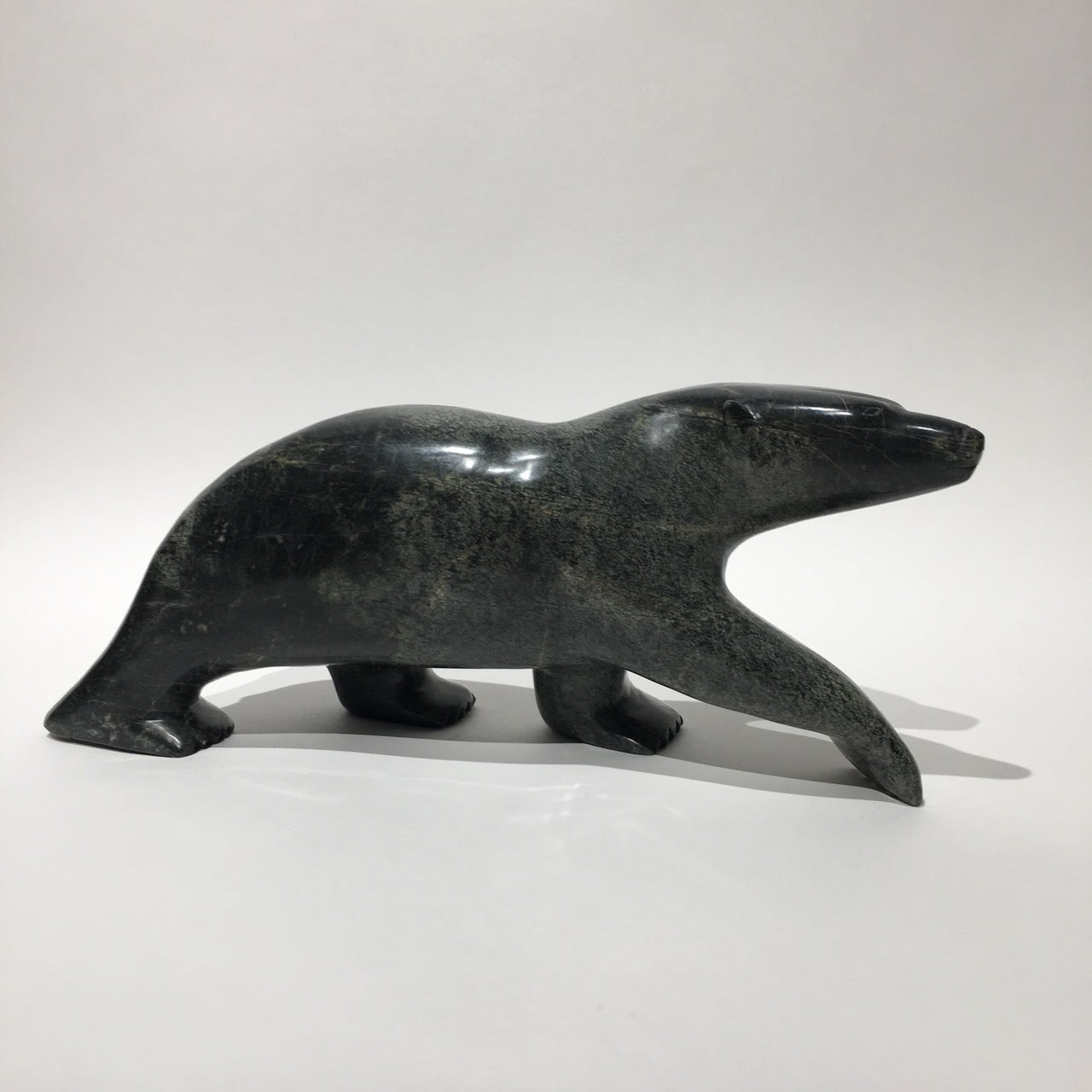


Product SKU
Noah Kelly
